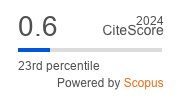Antibacterial and antimycotic activity of benzophenazine derivatives: an in vitro study
https://doi.org/10.29001/2073-8552-2025-2725
Abstract
Introduction. Today, one of the urgent health problems is the increasing antibiotic resistance of pathogenic microorganisms. In this regard, there is an increasing need to find new antimicrobial agents for medical use. Benzophenazine derivatives may be an example of promising antimicrobial agents. This article presents a study of the antimicrobial properties of newly synthesized compounds of the benzophenazine group.
Aim: To evaluate the antibacterial and antifungal potential of benzophenazine derivatives under experimental conditions in vitro.
Material and Methods. The antimicrobial activity of a panel of benzophenazine derivatives – unsubstituted benzophenazin-5-ol (VN-13), o-methylated benzophenazin-5-ol (VN-16-3), 4,5-difluorobenzophenazin-5-ol (VN-11), and o-methylated 4,5-difluorobenzophenazin-5-ol (VN-35-3) – was assessed by titration in sterile 96-well plates, followed by plating on solid media. The antimicrobial activity of the compounds was evaluated against pathogens of infectious diseases such as Escherichia coli ATCC 25922, Staphylococcus aureus ATCC 29213, Streptococcus agalactiae, Pseudomonas aeruginosa, MRSA (methicillin-resistant Staphylococcus aureus), VRE (vancomycin-resistant Enterococcus), CRAB (carbapenem-resistant Acinetobacter baumannii), Burkholderia cenocepacia, Candida albicans. The antibacterial and antifungal potential of the compounds was assessed by the presence or absence of microbial colony growth at various concentrations of the benzophenazines (from 2000 μg/ml to 0.016 μg/ml).
Results. The study results demonstrated that all tested benzophenazine derivatives exhibited antibacterial activity against Streptococcus agalactiae and Burkholderia cenocepacia. Against other tested strains, including multidrug-resistant ones, only unsubstituted benzophenazine-5-ol (VN-13) showed activity. Pseudomonas aeruginosa and Escherichia coli ATCC 25922 were resistant to all studied compounds.
Conclusion. Benzophenazine derivatives demonstrate bactericidal or bacteriostatic activity against a number of bacteria, including polyresistant strains, as well as fungi of the genus Candida. Based on the results obtained, it is possible to assume the relevance of further research in the direction of studying the efficacy and safety of benzophenazines as promising antimicrobial agents.
Keywords
About the Authors
V. V. NadtochiyRussian Federation
Vadim V. Nadtochiy, Graduate Student
19, Mira str., Yekaterinburg, 620002, Russian Federation
A.M.K. Altobee
Russian Federation
Aqeel M.K. Altobee, Graduate Student
19, Mira str., Yekaterinburg, 620002, Russian Federation
P. G. Amineva
Russian Federation
Polina G. Amineva, Head of the Laboratory - Medical Microbiologist, Quality Med; Assistant, Department of Medical Microbiology and Clinical Laboratory Diagnostics, USMU; postgraduate student, USMU
3, Repina str., Yekaterinburg, 620028, Russian Federation;
1, Mashinnaya st., Yekaterinburg, 620142, Russian Federation
I. I. Nikonov
Russian Federation
Igor L. Nikonov, Cand. Sci. (Chem.), Leading Research Scientist, UrFU; Researcher, I.Ya. Postovsky Research Institute, UBRAS; Associate Professor, USFEU
19, Mira str., Yekaterinburg, 620002, Russian Federation;
37, Sibirskiy trakt, Yekaterinburg, 620100, Russian Federation;
22, S. Kovalevskaya str., Yekaterinburg, 620990, Russian Federation
G. V. Zyrianov
Russian Federation
Grigory V. Zyrianov, Dr. Sci. (Chem.), Professor, Department of Organic and Biomolecular Chemistry, UrFU; Chief Researcher, I.Ya. Postovsky Research Institute, UBRAS
19, Mira str., Yekaterinburg, 620002, Russian Federation;
22, S. Kovalevskaya str., Yekaterinburg, 620990, Russian Federation
V. L. Rusinov
Russian Federation
Vladimir L. Rusinov, Dr. Sci. (Chem.), Professor, Corresponding Member of the Russian Academy of Sciences, Head of the Department, Department of Organic and Biomolecular Chemistry, UrFU; Leading Research Scientist, I.Y. Postovsky Research Institute, UBRAS
19, Mira str., Yekaterinburg, 620002, Russian Federation;
22, S. Kovalevskaya str., Yekaterinburg, 620990, Russian Federation
References
1. Naghavi M., Vollset S.E., Ikuta K.S., Swetschinski L.R., Gray A.P., Wool E.E. et al. GBD 2021 Antimicrobial Resistance Collaborators. Global burden of bacterial antimicrobial resistance 1990–2021: a systematic analysis with forecasts to 2050. Lancet. 2024;404(10459):1199–1226. https://doi.org/10.1016/S0140-6736(24)01867-1
2. WHO bacterial priority pathogens list, 2024: Bacterial pathogens of public health importance to guide research, development and strategies to prevent and control antimicrobial resistance. URL: https://www.who.int/publications/i/item/978924009346 (04.02.2025).
3. Zaripova G.R., Bakirov B.A., Kudlay D.A., Zakirova G.N., Teregulova G.R. Nosocomial pathogens in ICU patients in a multidisciplinary hospital: profile and resistance of pathogens. Clin. pharmacol. and therapy. 2025;1:33–39. https://doi.org/10.32756/0869-5490-2025-1-33-39
4. Xu J., Koval A., Katanaev V. L. Clofazimine: A journey of a drug. Biomed. Pharmacother. 2023;167:115539. https://doi.org/10.1016/j.biopha.2023.115539
5. Thalhammer K.O., Newman D.K. A phenazine-inspired framework for identifying biological functions of microbial redox-active metabolites. Curr. Opin. Chem. Biol. 2023;75:102320. https://doi.org/10.1016/j.cbpa.2023.102320
6. Olyaei A., Ghaleghovandi N., Moghadami F., Sadeghpour M., Abediha S. Design, synthesis, antimicrobial, antibiofilm evaluation and Z/E-isomerization of novel 6-((arylamino)methylene)benzo[a] phenazin-5(6H)-ones induced by organic solvent. RSC Adv. 2023;13(42):29393–29400. https://doi.org/10.1039/d3ra05788g
7. Krishnaiah M., Almeida N., Udumula V., Song Z., Chhonker Y.S., Abdelmoaty M.M. et al. Synthesis, biological evaluation, and metabolic stability of phenazine derivatives as antibacterial agents. Eur. J. Med. Chem. 2018;143:936–947. https://doi.org/10.1016/j.ejmech.2017.11.026
8. Garrison A.T., Abouelhassan Y., Norwood V.M., Kallifidas D., Bai F., Nguyen M.T. et al. Structure-activity relationships of a diverse class of halogenated phenazines that targets persistent, antibiotic-tolerant bacterial biofilms and Mycobacterium tuberculosis. J. Med. Chem. 2016;59:3808–3825. https://doi.org/10.1021/acs.jmedchem.5b02004
9. Garrison A.T., Abouelhassan Y., Kallifidas D., Bai F., Ukhanova M., Mai V. et al. Halogenated phenazines that potently eradicate biofilms, MRSA persister cells in non-biofilm cultures, and Mycobacterium tuberculosis. Angew. Chem. Int. Ed. Engl. 2015;54(49):14819–14823. https://doi.org/10.1002/anie.201508155
10. Qin C., Yu D., Zhou X., Zhang M., Wu Q., Li J. et al. Synthesis and antifungal evaluation of PCA amide analogues. J. Asian Nat. Prod. Res. 2019;21(6):587–596. https://doi.org/10.1080/10286020.2018.1461843
11. Le-Nhat-Thuy G., Thi T.A.D., Thi Q.G.N., Thi P.H., Nguyen T.A., Nguyen H.T. et al. Synthesis and biological evaluation of novel benzo[a]pyridazino[3,4-c]phenazine derivatives. Bioorg. Med. Chem. Lett. 2021;43:128054. https://doi.org/10.1016/j.bmcl.2021.128054
12. Nadtochiy V.V., Nikonov I.L., Zyryanov G.V. Modern approaches to the synthesis of phenazine derivatives (microreview). Chem. Heterocycl. Comp. 2024;60:233–235. https://doi.org/10.1007/s10593-024-03325-z
13. Shi Z., Zhang J., Wang Y., Hao S., Tian L., Ke C. et al. Antibacterial effect and mechanisms of action of forsythoside B, alone and in combination with antibiotics, against Acinetobacter baumannii and Pseudomonas aeruginosa. Phytomedicine. 2024;135:156038. https://doi.org/10.1016/j.phymed.2024.156038
14. Yadav J., Kaushik C.P. Sulfonamide tethered 1,4-disubstituted 1,2,3-triazoles: Synthesis and antibacterial evaluation. Synthetic Communications. 2024;54,7:536–552. https://doi.org/10.1080/00397911.2024.2320842
15. Esposito A., D’Alonzo D., Stabile M., Firpo V., Migliaccio A., Artiano R. et al. Synthesis of a di-O-acylated deoxynojirimycin (DNJ) derivative and evaluation of its antibacterial and antibiofilm activity against Staphylococcus aureus and Stenotrophomonas maltophilia. Carbohydr. Res. 2025;550:109379. https://doi.org/10.1016/j.carres.2025.109379
16. Yan J., Liu W., Cai J., Wang Y., Li D., Hua H. et al. Advances in phenazines over the past decade: review of their pharmacological activities, mechanisms of action, biosynthetic pathways and synthetic strategies. Mar. Drugs. 2021;19(11):610. https://doi.org/10.3390/md19110610
Supplementary files
Review
For citations:
Nadtochiy V.V., Altobee A., Amineva P.G., Nikonov I.I., Zyrianov G.V., Rusinov V.L. Antibacterial and antimycotic activity of benzophenazine derivatives: an in vitro study. Siberian Journal of Clinical and Experimental Medicine. (In Russ.) https://doi.org/10.29001/2073-8552-2025-2725





.png)





























